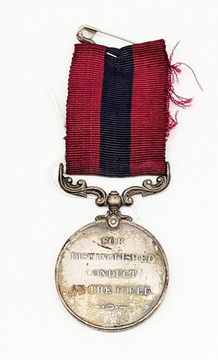COWAIN, Charles
| Service Number: | 1463 |
|---|---|
| Enlisted: | 19 November 1914 |
| Last Rank: | Private |
| Last Unit: | 16th Infantry Battalion (WW1) |
| Born: | Mooroopna, Victoria, Australia, 7 December 1885 |
| Home Town: | North Perth, Vincent, Western Australia |
| Schooling: | Not yet discovered |
| Occupation: | Plumber |
| Died: | 1949, cause of death not yet discovered, place of death not yet discovered |
| Cemetery: | Not yet discovered |
| Memorials: |
World War 1 Service
| 19 Nov 1914: | Enlisted AIF WW1, Private, 1463, 16th Infantry Battalion (WW1) | |
|---|---|---|
| 22 Feb 1915: | Embarked AIF WW1, Private, 1463, 16th Infantry Battalion (WW1), --- :embarkation_roll: roll_number: '12' embarkation_place: Fremantle embarkation_ship: HMAT Itonus embarkation_ship_number: A50 public_note: '' | |
| 25 Apr 1915: | Involvement AIF WW1, Private, 1463, 16th Infantry Battalion (WW1), ANZAC / Gallipoli | |
| 9 Aug 1915: | Wounded AIF WW1, Private, 1463, 16th Infantry Battalion (WW1), The August Offensive - Lone Pine, Suvla Bay, Sari Bair, The Nek and Hill 60 - Gallipoli, Bomb Wound Evacuated to Egypt | |
| 12 Aug 1916: | Wounded AIF WW1, Private, 1463, 16th Infantry Battalion (WW1), Battle for Pozières | |
| 25 Mar 1918: | Honoured Distinguished Conduct Medal, Dernancourt/Ancre, 4th Brigade Huberteurne |
Help us honour Charles Cowain's service by contributing information, stories, and images so that they can be preserved for future generations.
Add my storyBiography contributed by Stephen Brooks
Charles Cowain was at the Landing on Gallipoli and was at Anzac until he suffered a bomb wound to the hand on the 9 August 1915. He was evacuated to Egypt where he was also treated for the effects of dysentry and rheumitism for many months. He did return to Anzac briefly before the general evacuation.
In France he was wounded again at Pozieres, 12 August 1916, with severe gunshot wounds to both arms and shell shock. He was evacuated to England and after recovery underwent VD treatment for several months. He was sent back To France during early July 1917.
He was awarded the Distinguished Conduct Medal after a fight at Heburtene on the 1 April 1918 when he bombed his way 200 yards up a communication trench to the German front line trench. He apparently had opposition all the way and displayed reckless bravery. When there he also bombed a troublesome enemy machine gun nest into submission and inflicted a lot of casualties.
He was married with infant children and sent home early during July 1918.











